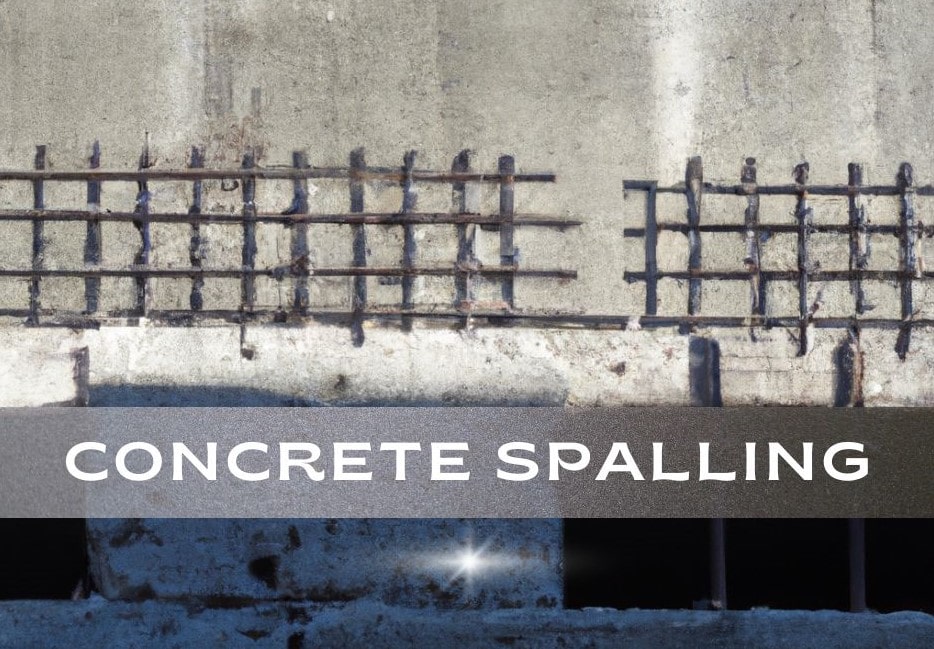Concrete Spalling: Causes, Prevention, and Repair

Introduction
Concrete is a durable material that can withstand a lot of wear and tear, making it a popular choice for construction projects. However, even the most robust concrete structures are susceptible to damage over time. One of the most common issues that affect concrete is spalling. Concrete spalling refers to the flaking or chipping of the surface layer of concrete. In severe cases, the damage can extend deep into the structure, leading to structural damage.
In this article, we will explore the causes of concrete spalling, ways to prevent it, and methods to repair it effectively.
Causes of Concrete Spalling
Several factors can contribute to concrete spalling. Some of the most common causes include:
Freeze-thaw cycles
One of the primary causes of concrete spalling is freeze-thaw cycles. This occurs when water gets into the concrete and freezes, causing the concrete to expand and crack. When the ice melts, the cracks become bigger, resulting in spalling. This is a common problem in colder climates where the temperature fluctuates above and below freezing point.
Corrosion of Reinforcing Steel
Corrosion occurs when the steel reacts with moisture and oxygen to form iron oxide (rust).
Iron oxide has a greater volume than the original steel, which means that as the rust forms, it expands and puts pressure on the surrounding concrete. This expansion of the rusted steel can cause the surrounding concrete to crack and spall.
Chemical Exposure
Concrete is resistant to many chemicals, but certain chemicals, such as acids and salts, can damage the surface and cause spalling. This is particularly common in industrial areas where chemicals are frequently used.
Improper Cover
Another factor that can contribute to concrete spalling is improper cover. Cover refers to the thickness of the concrete cover over the reinforcing steel. When the cover is too thin, the steel can be exposed to water and chemicals, leading to corrosion and spalling.
Poor Concrete Quality
Poor quality concrete can also be a cause of spalling. If the concrete mix is incorrect, or if it is not properly cured, it can result in a weakened surface that is prone to spalling. This is why it is important to use high-quality concrete and ensure that it is properly mixed and cured.
Prevention of Concrete Spalling
Proper Concrete Mix and Curing
One of the key factors in preventing concrete spalling is using the correct concrete mix and ensuring that it is properly cured. The mix should have the right proportions of cement, sand, and aggregate, and it should be properly mixed and poured to ensure that there are no voids or weak spots. Additionally, it is important to cure the concrete properly by keeping it moist for the required amount of time. This allows the concrete to harden properly and develop the necessary strength to resist spalling.
Adequate Concrete Cover
The cover should be adequate to prevent moisture and other harmful substances from reaching the steel. The thickness of the cover depends on the type of structure and the environmental condition in which it is located.
Corrosion Protection Measures
Corrosion of reinforcing steel is a major cause of concrete spalling. To prevent this, appropriate corrosion protection measures should be used. These can include coatings, such as epoxy or polyurethane, which provide a barrier between the steel and the surrounding concrete, or cathodic protection, which uses an electrical current to prevent corrosion.
Regular Maintenance and Inspection
Regular Maintenance includes cleaning the surface regularly to remove any dirt or debris that can trap moisture, and repairing any cracks or damage as soon as they are detected. Additionally, regular inspections can help identify potential spalling problems before they become serious, allowing for timely repairs and maintenance.
Repairing Concrete Spalling
If you are dealing with concrete spalling on your building, it's essential to take immediate action to prevent further damage.
Fortunately, repairing concrete spalling is a straightforward process that you can tackle yourself. The first step is to assess the extent of the damage and determine the cause of the spalling.
Once you have identified the cause of the spalling, you can begin the repair process. The first step is to remove any loose or damaged concrete using a hammer and chisel. Be sure to wear protective gear, such as safety glasses and gloves, to prevent injury.
After removing the damaged concrete, you will need to clean the area thoroughly using a pressure washer or a stiff-bristled brush. This will help remove any debris or loose particles that could interfere with the repair process.
Next, you will need to apply a concrete bonding agent to the damaged area. This will help ensure that the new concrete adheres properly to the old concrete. Follow the manufacturer's instructions carefully when applying the bonding agent.
Once the bonding agent has been applied, you can mix up a batch of concrete and apply the concrete mix to the damaged area, making sure to smooth it out evenly using a trowel. You can also apply a concrete sealant to protect the repaired area from future damage.